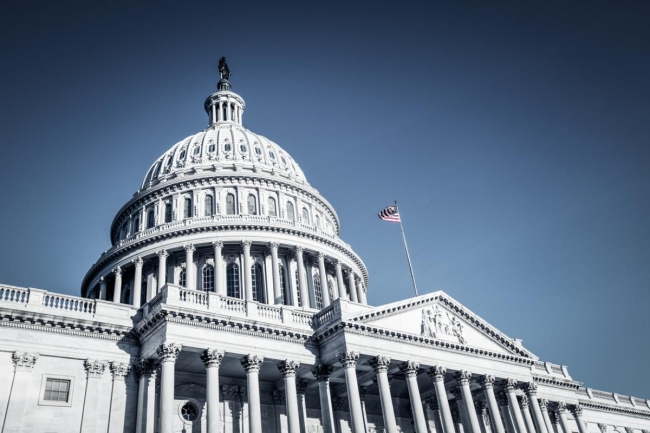You have /5 articles left.
Sign up for a free account or log in.

istock.com/PamelaJoeMcFarlane
It’s a wonky difference. But colleges that disproportionately educate students of color could be shortchanged billions of dollars if Congress divvies up money between institutions in the next coronavirus relief package in the same way as it did in the last, warn a number of advocacy groups.
What’s concerning a range of groups, they said in a letter to congressional leaders last week, is that the CARES Act, the $2 trillion coronavirus aid package Congress passed in March, divided up about $14 billion in aid to colleges and universities based on the number of full-time-equivalent students they have. And when Senate Republicans unveiled their proposal for the next package last week, they proposed to divide up another $29 billion of aid in the same way.
The problem, said the groups, is that the method doesn’t recognize that students at community colleges, who are more likely to be minorities or low income than those at four-year institutions, are also more likely to enroll part-time, as they juggle having other jobs and raising children.
As a result, it would take multiple students going half-time at a community college to be counted when the aid is distributed as one typical student going to classes full-time at a four-year university.
In comparison, the proposal Democrats have laid out for the next package would divide up $37 billion in aid based on the total number of students each college or university, regardless of whether they are full- or part-time.
The debate comes as it's unclear how much or even if there will be additional aid in another relief package to be divvied up among colleges. Congress is deadlocked over a number of issues, including whether to protect colleges, schools and businesses from liability if people get infected with the disease. Senate Republicans will push for votes this week on a stopgap measure that would extend higher unemployment payments during the pandemic in some fashion. And some higher education lobbyists said Friday they are concerned the passage of a stopgap measure would take away the steam to pass a larger, more politically contentious package that would include more money to help colleges and universities deal with their financial problems during the pandemic. But they said they're holding out hope Congress can find a way to pass a larger package.
"There’s no question in my mind that a stopgap unemployment extension would have an impact on the minds of a few members of Congress about the need for a larger supplemental package," said Luis Maldonado, the American Association of State Colleges and Universities' vice president for government relations and policy analysis. "However, I also realize that the majority of senators and representatives recognize that the next supplemental package is intended to directly support many vital parts of the US economy beyond those who need unemployment assistance during these difficult times."
The uncertainty is adding to urgency of the debate over how to divide up what additional aid there could be. And the difference could be tens of billions of dollars, according to an analysis by Ben Miller, vice president for postsecondary education at the Center for American Progress, one of the groups that wrote congressional leaders urging them to divide up the aid in a way that would give more to community colleges as well as minority-serving institutions, where students are also more likely to go to school part-time.
“At a time when the country is finally starting to acknowledge gigantic, systematic racial inequities across all sectors of economy, it’s astounding to see some in Congress want to count students at many community colleges and minority-serving institutions as ‘less than’ other students. Congress needs to step up and put the money where the mouth is,” said Amy Laitinen, higher education policy director at New America, another of the groups involved in sending the letter.
In question, said Maureen Murphy, president of the College of Southern Maryland, a two-year institution where a third of the students are minorities, is that “funding for higher education is built on this 19th-century notion of full-time students going through a degree program in a prescribed amount of time that doesn’t translate into what the 40 percent of undergraduates that go to community colleges need.”
But four-year colleges and universities are fighting for their share of the pie. They argue they deserve a larger share of aid because they’re taking a bigger financial hit than community colleges from having to make residence halls safer for students during the pandemic. Four-year institutions also took a big hit from having to refund room and board to students when they closed dorms and campuses in the spring.
The method of divvying up funding in the CARES Act and the Republican proposal recognizes that “the expenses and losses by institutions serving a residential setting now are on a wholly different magnitude” than other institutions, said Craig Lindwarm, vice president of government affairs at the Association of Public and Land-grant Universities.
A policy brief on the issue by APLU and the American Association of State Colleges and Universities argued, “While there are a multitude of areas in which colleges and universities are taking financial hits, none are bigger than in the areas of housing/dining and tuition revenue. A land-grant university in New England conservatively projects lost revenue of $51 million in the fall semester with $47.4 million (93 percent) related to tuition and fees (domestic students only) and housing and dining losses.”
The groups also argued that about the same percentage of their students receive Pell Grants as community colleges.
But the groups, including the centrist Third Way, argue that allocating money between institutions in the same way as the CARES Act is unfair. “Simply furnishing more money for higher education is insufficient. The allocation formula must focus on educational equity by ensuring this aid is allocated in such a way as to provide sufficient resources to two-year public colleges, which are a crucial, affordable on-ramp to higher education for millions of students, particularly low-income students, students of color, and first-generation college students,” the groups wrote.
For example, the letter said, public four-year colleges got 44 percent of the aid in the CARES Act, even though they educated 34 percent of college students. Public community colleges, on the other hand, received 27 percent of the money, despite teaching 39 percent of students.
To look at it another way, the groups said public two-year colleges educated 2.3 million Pell Grant recipients but only got credit for educating about one million students under the way the CARES Act distributed the money.
“That essentially erased over one million Pell recipients from these institutions in the eyes of the CARES allocation formula,” the letter said.
In contrast, public four-year institutions served only 2.2 million Pell Grant students, but they got funding in the CARES Act for 1.6 million Pell recipients.
“This results in public four-year colleges getting funding for almost half a million more Pell recipients than their other public college peers, even though they educate fewer of these students in total,” the letter said.
Which method Congress takes could mean billions. Public community colleges, providing two or fewer years of education, got 21 percent of CARES Act funds and would get 23 percent of the money in the Republican proposal, according to an analysis by Miller. They would get about 30 percent under the Senate Democrats' proposal.
Depending on which method Congress takes, community colleges, which received $2.6 billion in the CARES Act, would get $5.7 billion under the Republican proposal. But they would get almost twice as much, $10 billion, in the HEROES Act, and $38.3 billion under a much larger proposal by Senate Democrats that apportions aid based on the total number of students.
The debate over how to divide up federal aid is pitting associations representing community colleges against those lobbying for four-year institutions.
“Community colleges don’t serve parts of students, they serve the whole student," said David Baime, senior vice president for government relations and policy analysis for the American Association of Community Colleges. "Part-time students need and receive the same supports that full-time students do, and often have greater financial need. Community colleges serve disproportionate numbers of these students, not to mention higher percentages of low-income and traditionally underrepresented groups.”
And community colleges are also dealing with costs richer schools are less likely to be facing, said the College of Southern Maryland’s Murphy.
Two-thirds of her students attend college part-time, she said, “because they work and they work hard. Right now in this COVID environment, many of them have lost their jobs,” she said.
Institutions under the CARES Act were required to give half of their aid to students through emergency grants to help with living expenses. They could put the other half toward the financial losses they’ve taken.
But Murphy said that of the $1.25 million her college could have used on its own budget, it spent $900,000 of it to give students more emergency aid. "We know their lives are just falling apart right now," she said.




